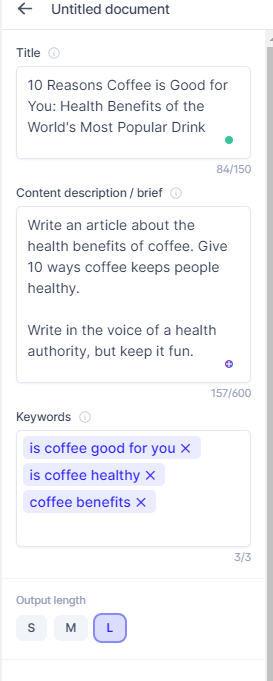AI is the future of marketing. You might not know it yet, but AI will be running the show in just a few years. It won’t be long before we are all interacting with smart machines that know more about us than our closest friends and family members do. Already, artificial intelligence is being used to drive sales conversions for companies like Zillow and Netflix. In this post, I’ll discuss how AI will change marketing as we know it by 2020!
I didn’t write that opening paragraph. It was written by GPT-3, an AI developed by Open AI. It’s original, unedited, pure output from a machine that reads and learns from all the knowledge we humans have placed on the internet over the last decade.
It’s not perfect, obviously—and not just because of the seemingly avoidable wrong year 🤦—but it’s still pretty impressive for a robot. Leave it to Elon Musk, one of the prominent backers of Open AI, to attempt to kill off a bunch of marketing industries in one fell swoop.
But really, it’s not that bad: robots aren’t coming for my job…yet.
What kind of marketing can AI do?

Artificial intelligence (AI) uses computing power and the amassed information on the internet to teach machines to model human-like output very quickly. That means marketers can use AI to do things like conceptualize new products, optimize SEO strategy, and generate new blog posts, images, and videos. While the AI doesn’t understand the language and information it’s parsing when it scours the web, it can effectively reassemble this information into original, meaningful content.
In content marketing, GPT-3 has found its way into all sorts of spaces:
-
Writing. Copy, content, and ads automatically written out just by inputting a few words.
-
Editing. Not only checking for grammar errors, but also rewording whole sections of text.
-
Video. Changing what a person says in a video by editing a transcript.
-
SEO. Advanced language parsing to help content producers rank their articles better.
-
Social. Posts and pictures created from long-form articles and automatically sent to your social feeds.
To date, GPT-3 is one of the most powerful AI models. According to VentureBeat, GPT-3 has a memory size of 350GB and 175 billion parameters. These parameters are what “teach” GPT-3 its language models, so when it comes to learning, the more parameters the better. To give you a sense of where this technology is headed, the new Google AI was trained on trillions of parameters.
While I’d like to think these robots don’t have job-stealing potential quite yet, the future of marketing is going to include them. Programmers can access GPT-3’s API using Python, which means there’s a lot of opportunity there. So it’s time to buckle down and learn how to use these tools effectively—not to replace you, but to empower you.
How good is AI in the content marketing space?
I’ve been experimenting with many of these AI-based tools since they came out. Some of them I find incredible. Others are ok, but definitely not “there yet,” especially given all the hype.
The issue when using AI for writing in particular is always quality—these are far from finished products. They can help writers move more quickly (creating a skeleton of an article, for example), but you’ll need to fact check the heck of it, look for weird logical fallacies that a robot wouldn’t grok, and then make it sound like a human.
Let’s take a look at an example.
What it looks like when AI writes
GPT-3 is a lightning-fast writer. For most of these AI writers, you feed it basic information about a story, describe what content you want the AI to write about, and even select the type of voice you want it to use. The AI will start spitting out text almost as fast as you can hit enter.
Here’s the input screen for the long-form writer in Jarvis, one of the biggest AI writing platforms. It’s pretty basic: you create a title, give a description of what you want the AI to write, and include some keywords.

Once you hit go, the AI spits out your content. Here’s what the output screen looks like.

Not bad, but I absolutely can’t vouch for the accuracy of the “facts” in there. Also: is coffee’s popularity really what spawned the controversy (so dramatic!)? I highly doubt it.
Beware the Jabberwock
Sometimes the issue is even worse than just questionable accuracy.
Below is a bread recipe I asked Jarvis to write in the voice of the famous chef James Beard.

Notice that the amount of milk you add is weather-dependent. James Beard would be rolling over in his grave.
AI is also prone to writing complete nonsense—not like logic-based nonsense but actual non-language. Here’s an example of the AI describing how to play the game of Bingo:

There’s a potential here for marketers to use these technologies liberally without attention to detail and quality. But in a world where content is king, businesses can’t rank for a 400-word ramble on a subject, stuffed with keywords. Google’s SEO standard of expertise, quality, and trust (EAT) will weed out any low-quality garble, teaching people pretty quickly that AI can’t run your content marketing team.
In the end, our language, cadence, voice, and personality are what customers connect with. Most savvy customers aren’t just interested in information: they’re interested in information and emotion. What’s at stake here is value: both for you and your customers. So please…edit your AI.
Types of AI tools for content marketing
If, after all those warnings, you’re still willing to give it a shot, that’s great. I’m part of many AI writing Facebook Groups, and plenty of marketers swear by AI for their content output. So if you go in with the right expectations—that is, that you’re going to get speed, not quality—it’s a fun experiment.
Here are some of the AI tools available for content marketing. After doing a bunch of testing for my own content marketing business, I chose to list these tools because of their reasonable price (under $100/month), their unique offering, and whether or not I was able to get them to work as intended.
AI writing tools
Marketers can use AI writers for most writing tasks, including social media posts, ad copy, product copy, blog outlines, and even full blog posts.
Tools for both short- and long-form content
Tools for just short-form copy
Tools for longer-form content
AI editing tools
AI editing tools check for typos and help reword phrases and entire sentences by suggesting AI-written alternatives. They can also help implement brand content guidelines through smart style guides.
By the way, Grammarly thinks I should be more diplomatic about Elon Musk. Like I said: not perfect.

AI video tools
AI video tools can change what someone says in a video with a quick edit of the video’s transcript through a process called overdubbing. They can also do things like replace backgrounds around a subject, lessening the need for greenscreens and post-production editing.
AI SEO tools
AI tools for SEO help automate things like content briefs and headlines. They generate lists of topics to include in articles by analyzing the structure of the top pages in Google. They can also help with keyword research, topic clustering, and more.
AI social tools
Social AI tools create original posts from a brand’s existing content and help generate ideas for new social posts by “learning” what a brand is about.
These AI content marketing tools are already out there, and businesses, brands, and marketers that learn how to use them well—as a guide, not a hack—will be one step ahead.
[adsanity_group align=’alignnone’ num_ads=1 num_columns=1 group_ids=’15192′]
Need Any Technology Assistance? Call Pursho @ 0731-6725516




